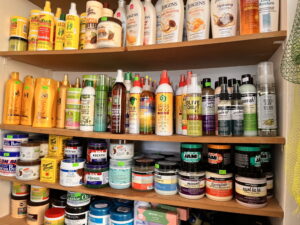Hair Bonds: The Foundation of Strong and Healthy Hair
Your hair’s strength, structure, and overall health are deeply rooted in its internal composition, particularly the various bonds that hold it together. To maintain vibrant and resilient hair, it’s essential to comprehend these bonds, how they can be damaged, and the methods available for their repair.
The Structure of Hair Bonds
Each strand of hair is primarily composed of a protein called keratin, which is held together by three main types of bonds:
Disulfide Bonds: These are the strongest and most crucial bonds, providing hair with its shape, strength, and stability. They form between sulfur atoms in the amino acid cysteine.
Salt Bonds (Ionic Bonds): These are weaker physical side bonds that are easily broken by changes in pH. They contribute to the hair’s elasticity and can be disrupted by acidic or alkaline solutions.
Hydrogen Bonds: These are also physical side bonds and are the weakest among the three. They are broken by water or heat and reform as the hair dries or cools. Hydrogen bonds are responsible for the hair’s flexibility and temporary shape changes, such as those achieved through wet setting or blow-drying.
The Impact of Damaged Hair Bonds
When these bonds, especially disulfide bonds, are broken or weakened, the hair’s structural integrity is compromised. This can lead to:
Loss of Strength and Elasticity: Hair becomes more prone to breakage and split ends.
Altered Texture and Shape: The natural curl pattern or straightness can be disrupted, leading to uneven or frizzy textures.
Dullness and Lack of Shine: Damaged bonds can cause the hair cuticle to lift, resulting in a loss of luster and smoothness.
Common Causes of Bond Damage
Several factors can lead to the breaking of hair bonds:
Chemical Treatments: Procedures like bleaching, coloring, perming, and relaxing involve chemicals that can break disulfide bonds.
Heat Styling: Frequent use of high-temperature tools such as flat irons, curling wands, and blow dryers can weaken hydrogen bonds and, over time, affect disulfide bonds.
Mechanical Stress: Aggressive brushing, tight hairstyles, and hair accessories can cause physical stress, leading to bond breakage.
Environmental Factors: Exposure to UV rays, pollution, and harsh weather conditions can degrade hair bonds, especially disulfide bonds.
Repairing and Protecting Hair Bonds
Restoring and maintaining the integrity of hair bonds is crucial for healthy hair. Here are some strategies:
Use Bond-Building Treatments: Products formulated with bond-repairing technologies can help rebuild broken disulfide bonds. For instance, OLAPLEX’s patented Bond Building Technology™ works on a molecular level to repair these bonds and restore hair strength.
Limit Chemical and Heat Exposure: Reducing the frequency of chemical treatments and heat styling can prevent further bond damage. When using heat tools, always apply a heat protectant.
Adopt Gentle Hair Care Practices: Use wide-tooth combs, avoid tight hairstyles, and opt for silk or satin pillowcases to minimize mechanical stress.
Regular Deep Conditioning: Hydrating treatments can help maintain the hair’s moisture balance, supporting the integrity of salt and hydrogen bonds.
Try Xiangxiang Daily Now!
We Help You Launch New Products, And Continue To Grow. Try Us With 20% Off Your First Order!
Conclusion
Understanding the role of disulfide, salt, and hydrogen bonds in your hair is fundamental to maintaining its health and vitality. By recognizing the factors that can damage these bonds and implementing targeted repair and protection strategies, you can ensure your hair remains strong, resilient, and radiant.
Table of Contents
Latest Blog Posts
Check out the latest industry trends and take inspiration from our updated blogs, giving you a fresh insight to help boost your business.




